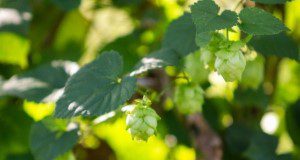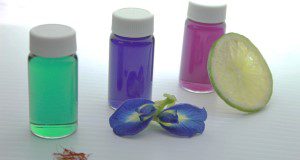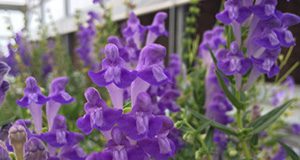This series of Key Plant, Key Pests publications are designed for Florida gardeners, horticulturalists, and landscape professionals to help identify common pests associated with regional flora. This new 6-page publication of the UF/IFAS Environmental Horticulture Department helps identify the most common pests found on trees in the sycamore group, Platanus spp., and it provides information and general management recommendations for sycamore lace bug, bacterial leaf scorch, powdery mildew, anthracnose, and canker stain. Written by Matthew Borden, Kelly Laplante, Juanita Popenoe, Adam Dale, Caroline R. Warwick, and Brian Pearson.
https://edis.ifas.ufl.edu/ep601
Tag: Brian Pearson
LED light increases leaf area and root length of Humulus lupulus (var. Tettnanger) in vitro
Propagation of hops has traditionally been accomplished through vegetative techniques. A more modern technique, micropropagation, can be used to propagate hops and offers several advantages to vegetative techniques. Research examining the use of LED lights in plant production has observed its ability to promote growth in plants through emission of higher light quality, such as enhanced red and blue wavelength discharge. This new 5-page EDIS publication provides information on the use and application of LED lights to enhance leaf area and root length of hops. Written by Chi D. Nguyen, Dominic Vu, Heqiang Huo, and Brian Pearson, and published by the UF/IFAS Environmental Horticulture Department.
https://edis.ifas.ufl.edu/ep583
Butterfly Pea (Clitoria ternatea) Flower Extract (BPFE) and Its Use as a pH-Dependent Natural Colorant
Butterfly pea (Clitoria ternatea), a twining vine native to Southeast Asia, produces deep blue to purple flowers that bloom nearly year-round in ideal conditions. When extracted in a liquid, the addition of a mild acid such as lemon or lime juice turns the naturally deep blue to purple color into a much lighter pink or purple color, giving the extract its color-changing ability. This new 5-page publication of the UF/IFAS Environmental Horticulture Department outlines the use of butterfly pea flower extract (BPFE) as a pH-dependent natural colorant, including an explanation of the science behind the color change, detailed parameters for flower extraction, instructions for storage and processing of the extract as well as a discussion of some of the other benefits of using BPFE. Written by Sean Michael Campbell and Brian Pearson.
http://edis.ifas.ufl.edu/ep573
Process of Drying Post-Harvest Hops (Humulus lupulus) for Small-Scale Producers Using a Novel Drying Rig
Fresh horticultural goods often require drying post-harvest to preserve quality and allow for successful long-term storage of plant material. Given the influx of hops cultivation in the state of Florida, this 5-page publication will help Florida hops growers and hobby brewers to understand how to efficiently dry hops prior to storage. Written by Sean Campbell and Brian Pearson and published by the UF/IFAS Environmental Horticulture Department, January 2019.
http://edis.ifas.ufl.edu/ep568
Florida Medicinal Garden Plants: Skullcap (Scutellaria spp.)
Scutellaria species (spp.) are perennial, herbaceous plants that are cultivated for both their ornamental and medicinal value. This 5-page document describes the uses and growing requirements of this species. Written by Amanda Morgan and Brian Pearson and published by the UF/IFAS Environmental Horticulture Department, September 2018.
http://edis.ifas.ufl.edu/ep564
Packaging and Storage of Hops (Humulus lupulus)
Hops (Humulus lupulus) are an essential ingredient to the production of beer. This 3-page document describes how to properly store and package hops. Written by Brian Pearson and Sean Campbell and published by the UF/IFAS Environmental Horticulture Department, June 2018.
http://edis.ifas.ufl.edu/ep561
Key Plant, Key Pests: Camellia
This 7-page document is one in the Key Plant, Key Pests series. It discusses identification and management of pests found on the camellia, a flowering plant common in Southern landscapes. Written by Juanita Popenoe, Caroline R. Warwick, and Brian Pearson and published by the UF/IFAS Environmental Horticulture Department, June 2018.
http://edis.ifas.ufl.edu/ep558






